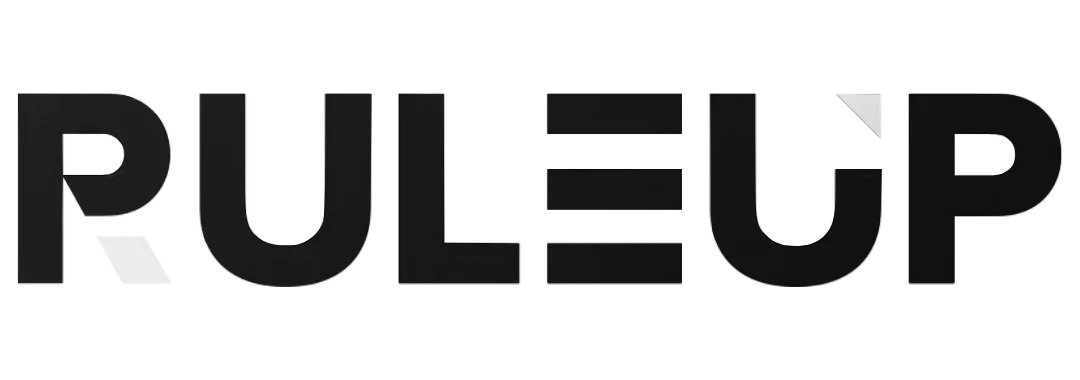
Did you know that organizations spend an average of $10,000 per employee annually on regulatory compliance costs?
Regulatory compliance remains one of the biggest challenges in running a modern business. Companies face a complex web of rules and requirements in different jurisdictions, industries, and markets. A single compliance mistake leads to hefty fines, reputation damage, and lost business opportunities.
Regulatory compliance means more than following rules. It creates systematic ways to meet legal requirements while keeping operations efficient. This piece will help you understand the complexities of compliance requirements. You’ll learn about everything from simple frameworks to implementing successful compliance programs.
We’ll explore ways to build reliable compliance frameworks and use technology-driven solutions. The guide covers practical strategies that help manage compliance costs, measure effectiveness, and stay compliant long-term. This resource gives you applicable information and practical solutions, whether you’re starting with compliance or improving your existing programs.
Understanding the Regulatory Compliance Landscape
The regulatory compliance scene is changing at an unprecedented pace. Companies now operate in a deeply interconnected global market. Compliance requirements have grown exponentially. Businesses must deal with over 60,000 regulatory documents published worldwide since 2009 [1].
Evolution of Global Regulatory Requirements
Major global events have altered the regulatory environment dramatically. Business leaders face some of the most important changes to regulatory requirements about green and ethical business practices [2]. A new era has emerged where mandatory rules replace voluntary actions. This marks a fundamental change in how organizations handle compliance.
Key Regulatory Bodies and Their Jurisdictions
Today’s regulatory environment requires working with multiple oversight bodies across jurisdictions. The regulatory framework has:
-
Federal Reserve Board (FRB) – Commercial banking oversight
-
Securities and Exchange Commission (SEC) – Securities industry regulation
-
Financial Industry Regulatory Authority (FINRA) – Securities firms oversight
-
Commodity Futures Trading Commission (CFTC) – Derivatives markets regulation [3]
Impact of Technology on Compliance Standards
Technology has transformed our approach to regulatory compliance. Better decision-making comes from advanced analytics and artificial intelligence that spot trends and potential risks [4]. Electronic platforms have largely replaced traditional paper-based submissions. RegTech solutions received investments of more than £3.57 billion in 2018 [1].
Technology brings opportunities and challenges alike. IoT and connected devices enable up-to-the-minute monitoring and faster issue detection [4]. New concerns about data privacy and cybersecurity need attention. The digital world requires companies to update legacy systems. The core team must work together to handle risk and compliance effectively [5].
Building a Robust Compliance Framework
A systematic approach that lines up with our organization’s specific needs and risk profile is essential to build a resilient compliance framework. Let’s look at how we can create a compliance structure that meets regulatory scrutiny.
Risk Assessment and Gap Analysis
A full picture of risks is the foundation of a strong compliance framework. We need to review our business activities and regulatory obligations to create a target operating model that lines up with local regulatory requirements and international standards [6]. This assessment helps us spot compliance risk contact points and company operations that might violate applicable regulations.
Compliance Policy Development
Once we identify the risks, we create clear and practical compliance policies. Our research shows that policies that work should include:
-
Clear purpose and objectives
-
Defined roles and responsibilities
-
Enforcement mechanisms
-
Monitoring procedures
-
Regular review schedules [7]
The policies must address specific risks we found during our assessment phase. This ensures they deal with all identified organizational risks properly [8].
Implementation Roadmap and Timeline
The implementation usually takes three months. We’ve seen it range from three weeks to 18 months based on how complex the organization is [9]. Our strategy has three key phases:
We start by checking how well the current compliance program works. Then we find gaps in the existing framework. The final step creates a detailed recommendation and implementation roadmap to boost the compliance management program [6].
Organizations need help to identify and meet their regulatory requirements. The core team’s oversight of the overall compliance framework boosts the compliance program’s effectiveness [6]. This lets stakeholders merge and automate their compliance tasks to fix control gaps and regulatory changes quickly and effectively.
Technology-Driven Compliance Solutions
Technology has become the life-blood of regulatory compliance management in today’s digital world. Organizations are investing heavily in RegTech solutions to streamline processes and maintain sustainable compliance functions.
Automated Compliance Monitoring Systems
Automated compliance monitoring systems have changed how organizations handle regulatory requirements. These systems help organizations cut compliance costs by 30-44% per process [10]. Modern compliance platforms provide:
-
Immediate monitoring and alerts
-
Automated document processing
-
Efficient workflow management
-
Better data quality control
-
Integrated systems architecture
AI and Machine Learning in Compliance
AI and ML technologies have transformed compliance management. These solutions process big amounts of data and generate predictive insights that make compliance more proactive than reactive [11]. Machine learning optimizes the balance between humans and machines. This creates a virtual workforce that executes tasks, communicates, and makes decisions [10].
Data Analytics for Compliance Reporting
Data analytics capabilities have grown by a lot and provide unmatched insights into compliance operations. Visual analytics tools convert firm data into digestible formats. This helps management understand regulatory reporting operations better [10]. Organizations now use data lakes that combine information from multiple source systems. These lakes provide quick data ingestion and horizontal scaling capabilities [10].
Technology implementation goes beyond automation – it transforms operations. AI-based list screening automates cross-referencing of individuals and entities against sanction lists and PEP lists. This reduces manual effort [11]. Machine learning algorithms monitor transactions immediately and identify unusual patterns. They detect potential money laundering activities more accurately than traditional methods [11].
Managing Compliance Costs and Resources
Small businesses with fewer than 20 employees spend £5,539.27 per employee yearly on regulatory costs [12]. Organizations now face the challenge of managing their compliance resources well. Let’s look at ways to make the most of compliance investments while making sure they work.
Cost-Benefit Analysis of Compliance Programs
Research shows that not following compliance rules costs three times more than staying compliant [12]. A good analysis should look at:
-
Direct costs (staff salaries, training, technology)
-
Indirect costs (employee time, consultancy fees)
-
Implementation costs
-
What it all means if rules aren’t followed [13]
Resource Allocation Strategies
Success comes from striking the right balance between available resources and what you need. The core team must avoid getting overwhelmed [14]. The best approach uses the right mix of resources to meet requirements. These resources often help other parts of the business too [14].
Here’s what works for resource allocation:
-
Spot limited resources and plan around when they’re free
-
Set up a scoring system everyone agrees with
-
Keep track of surprise work that might eat up your capacity [15]
Outsourcing vs In-house Compliance
The choice between keeping compliance in-house or outsourcing needs careful thought. In-house teams give you more control and let you customize everything. But they cost more. You’ll need five to six team members to run an in-house compliance team properly. Each person focuses on different parts of cybersecurity compliance [16].
Outsourcing brings these benefits:
-
More experts to choose from
-
Monthly costs you can plan for
-
Help whenever you need it
-
Less money spent on training and hiring [16]
Small and medium-sized companies that don’t have resources for their own compliance team often benefit from outsourcing [13]. But you still need someone inside your company to connect your leaders with the support team [16].
Measuring Compliance Effectiveness
The business world today needs effective ways to measure regulatory compliance programs. Our research shows that we can best measure compliance effectiveness through regular audits, internal control testing, and fixing identified gaps [17].
Key Performance Indicators (KPIs)
Compliance metrics help us learn about both internal protocols and external regulations [18]. Our key compliance KPIs include:
-
Policy and procedure violations tracking
-
Training completion rates
-
Reporting rates across different channels
-
Retaliation report trends
-
Culture survey results [19]
Mean Time to Detect (MTTD) and Mean Time to Respond (MTTR) are vital metrics that light up our compliance program’s efficiency [18].
Compliance Audit Frameworks
We use both internal and external reviews in our compliance audits. A compliance audit gives us a full picture of operations and procedures to determine if we meet regulatory standards [20]. We’ve learned that proving compliance needs:
-
Documentation of processes
-
Evidence of security restrictions
-
Enforcement of workflows
-
Electronic signatures for compliance actions [20]
Continuous Improvement Strategies
Building a compliance program isn’t a one-time task – regulators expect us to adapt and improve continuously [21]. Our strategy to improve focuses on:
-
Regular employee surveys and targeted audits
-
Proactive evaluations before problems arise
-
Periodic testing of internal controls
-
Root cause analysis of compliance failures [17]
Organizations should review their compliance metrics regularly to boost them as risks and regulatory expectations change [22]. We can track progress through measurable metrics like hotline reporting rates and investigation times by utilizing data [21].
Our experience shows that compliance monitoring checks transactions and activities against customer risk profiles [23]. This helps us identify and record high-risk activities properly, and we can investigate suspicious transactions and report them to regulatory bodies [23].
Conclusion
Regulatory compliance is the life-blood of modern business operations. It needs careful attention and smart implementation. Our detailed exploration shows how organizations can handle compliance requirements through well-laid-out frameworks, technology adoption, and resource optimization.
Our research reveals these key findings:
-
Systematic risk assessment and gap analysis are the foundations of effective compliance
-
Technology solutions cut compliance costs by 30-44% and improve accuracy
-
Organizations spend roughly three times more fixing non-compliance than staying compliant
-
Regular measurement and improvement ensure long-term success
Companies that excel at regulatory compliance gain competitive edges through lower risks, better reputation, and simplified operations. We know the challenges of keeping up with changing regulations in different jurisdictions. That’s why organizations should make use of information-based approaches and automated solutions while retaining control of internal processes.
Want to strengthen your compliance program? Get in touch and RuleUp! Our expertise can help turn your regulatory compliance from a challenge into a strategic advantage.
Successful compliance isn’t just about following rules. It builds resilient systems that protect and boost business value while meeting regulatory requirements. Smart planning, resource allocation, and continuous monitoring create compliance programs that become pillars of organizational success.
FAQs
-
What are regulatory compliance requirements? Regulatory compliance requirements are the laws, regulations, policies, procedures, and standards that organizations must adhere to, as mandated by governmental bodies and regulatory agencies such as FINRA, SEC, FDA, NERC, and the Financial Conduct Authority (FCA). These requirements are designed to ensure businesses operate legally and ethically within their respective industries.
-
What types of regulatory requirements exist? Regulatory requirements span various categories, including environmental regulations, labor laws, consumer protection laws, and occupational safety and health regulations. The specific requirements an organization must comply with depend on its industry, location, and operational scope. It’s crucial for businesses to identify and adhere to all relevant requirements to maintain legal operations.
-
How can organizations ensure compliance with regulatory requirements? To ensure regulatory compliance, organizations should implement a comprehensive strategy that includes:
-
Conducting thorough risk assessments and gap analyzes
-
Developing clear compliance policies and procedures
-
Implementing automated compliance monitoring systems
-
Leveraging AI and machine learning for data analysis
-
Conducting regular internal and external audits
-
Providing ongoing employee training
-
Establishing key performance indicators (KPIs) to measure compliance effectiveness
-
Adopting continuous improvement strategies
-
What are applicable regulatory requirements? Applicable regulatory requirements refer to the specific laws, codes, guidelines, and mandates set forth by regulatory authorities that are relevant to a particular organization or industry. These requirements can vary based on factors such as the company’s size, location, industry sector, and the nature of its operations. It’s essential for businesses to identify and understand which regulatory requirements apply to them to ensure full compliance.
-
How can technology help in managing regulatory compliance? Technology plays a crucial role in modern compliance management by:
-
Automating compliance monitoring and reporting processes
-
Utilizing AI and machine learning for predictive insights and risk assessment
-
Implementing data analytics for more accurate and efficient compliance reporting
-
Streamlining document processing and workflow management
-
Enhancing data quality control and system integration
-
Reducing compliance costs by 30-44% per process through automation
References
[1] – https://www.financierworldwide.com/the-evolution-of-compliance[2] – https://www.bsr.org/en/sustainability-insights/insights-plus/how-new-regulations-are-a-game-changer-in-just-and-sustainable-business
[3] – https://www.investopedia.com/articles/economics/09/financial-regulatory-body.asp
[4] – https://www.mantellassociates.com/technological-advances-and-their-impact-on-regulatory-affairs/
[5] – https://www.ey.com/en_nl/insights/banking-capital-markets/how-firms-can-respond-to-the-2024-regulatory-landscape
[6] – https://assets.kpmg.com/content/dam/kpmg/ae/pdf-2022/05/Regulatory-Compliance-Solutions.pdf
[7] – https://www.compliance.com/resources/tips-on-compliance-policy-development-and-updating/
[8] – https://hyperproof.io/10-key-elements-to-an-effective-compliance-program/
[9] – https://www.assurancelab.cpa/resources/the-timeline-the-steps-and-whats-involved-for-compliance
[10] – https://assets.ey.com/content/dam/ey-sites/ey-com/en_us/topics/financial-services/ey-regulatory-technology-regtech.pdf
[11] – https://www.akkio.com/post/compliance-artificial-intelligence
[12] – https://lucinity.com/blog/5-proven-strategies-to-cut-compliance-costs-for-small-businesses
[13] – https://lucinity.com/blog/the-complete-guide-to-reducing-compliance-costs-through-automation
[14] – https://www.planview.com/resources/guide/resource-management-software/resource-management-leverage-people-budgets/
[15] – https://www.planview.com/resources/guide/resource-management-software/top-12-resource-management-best-practices/
[16] – https://www.getpeerless.com/blog/inhouse-vs-outsourced-the-truth-about-federal-compliance-maintenance
[17] – https://www.ganintegrity.com/resources/blog/measuring-compliance-program-effectiveness/
[18] – https://www.corporatecomplianceinsights.com/8-crucial-compliance-kpis/
[19] – https://www.onetrust.com/blog/compliance-program-performance-metrics/
[20] – https://www.perforce.com/blog/alm/compliance-audit-best-practices
[21] – https://www.onetrust.com/blog/continuous-improvement-the-leading-indicator-for-successful-compliance-programs/
[22] – https://www.metricstream.com/insights/reporting-compliance-metrics.htm
[23] – https://financialcrimeacademy.org/compliance-monitoring/


